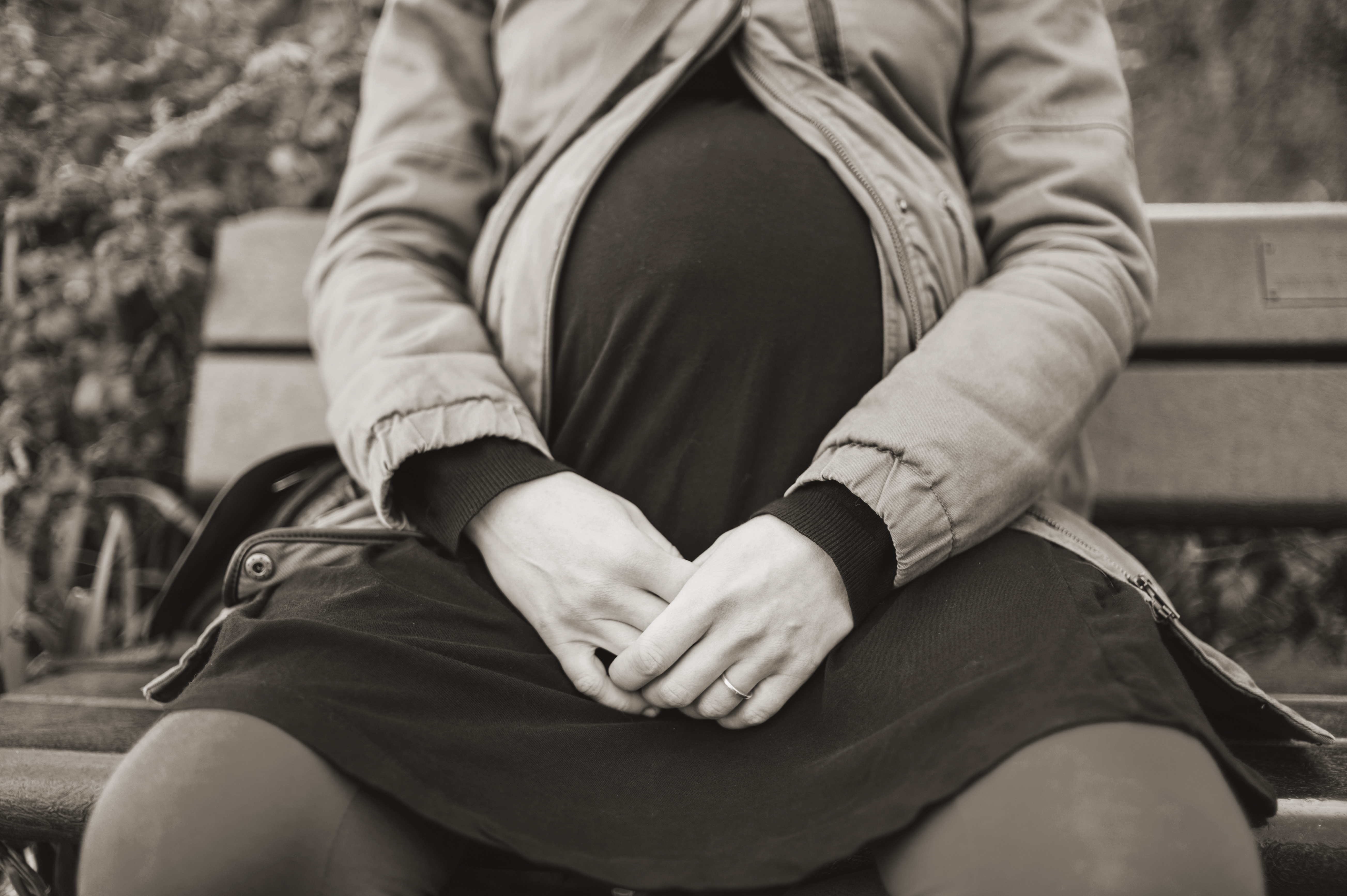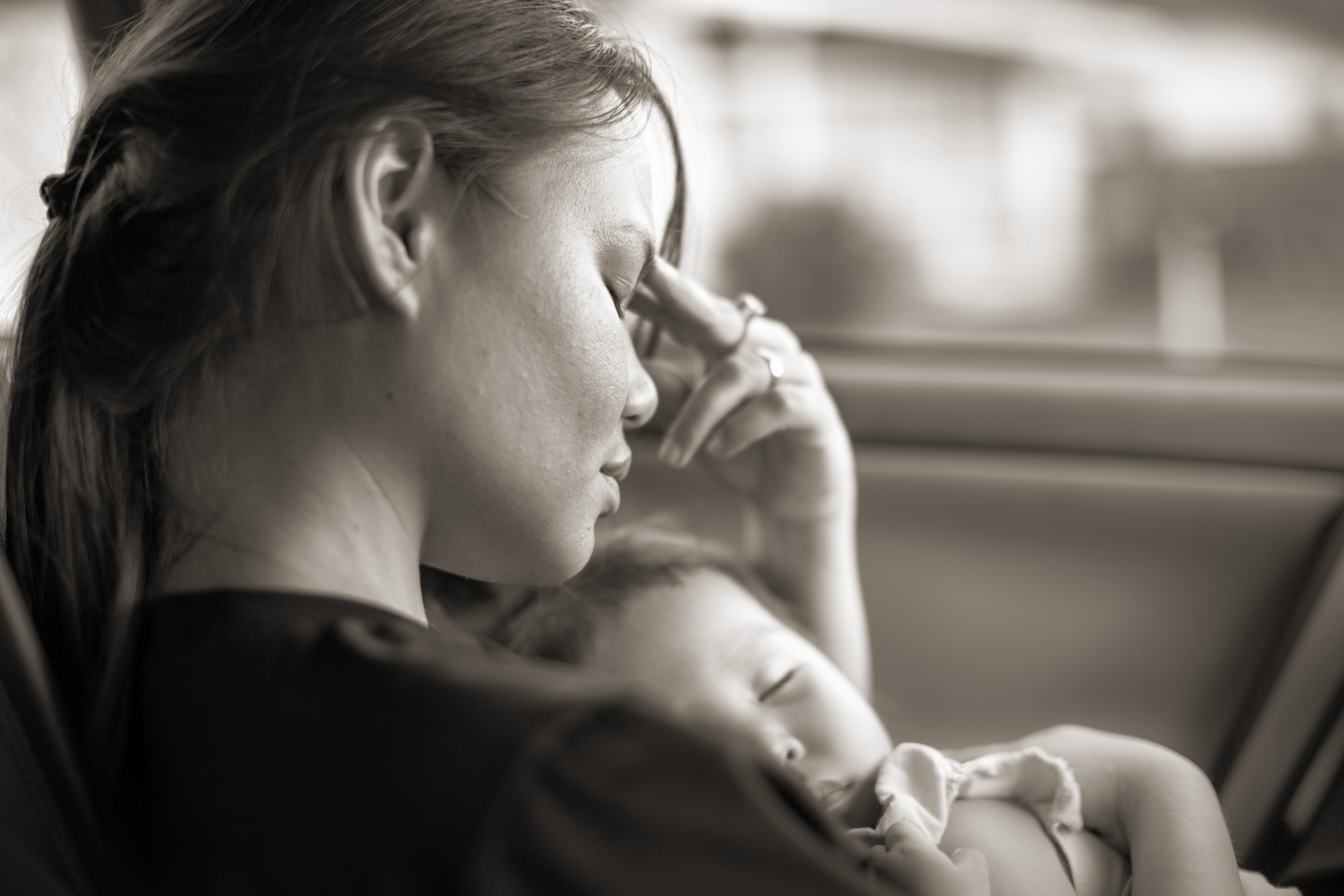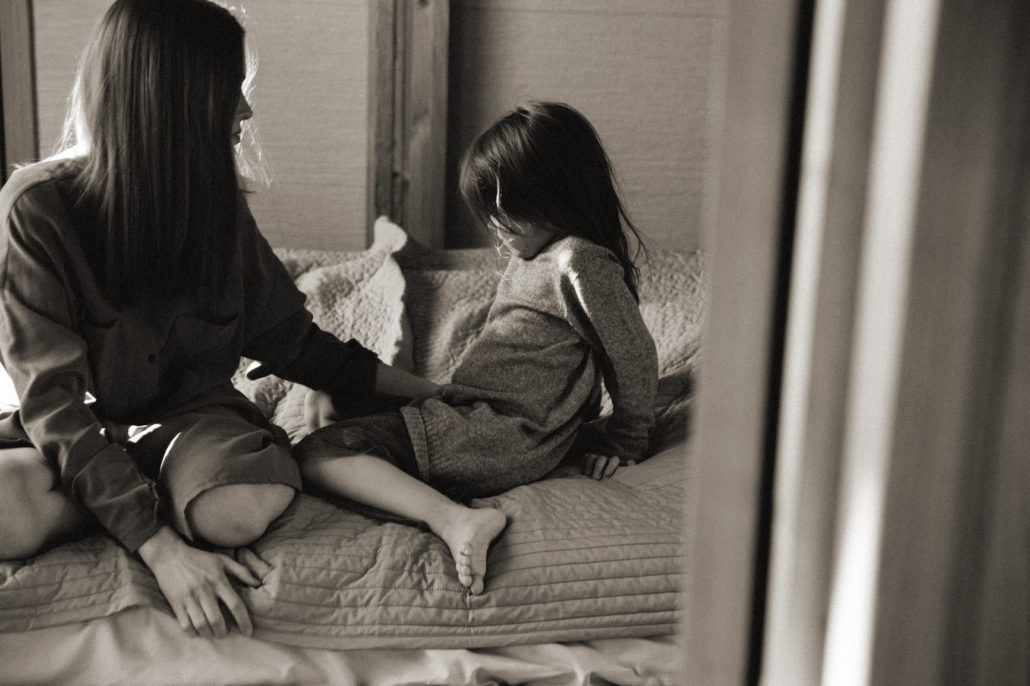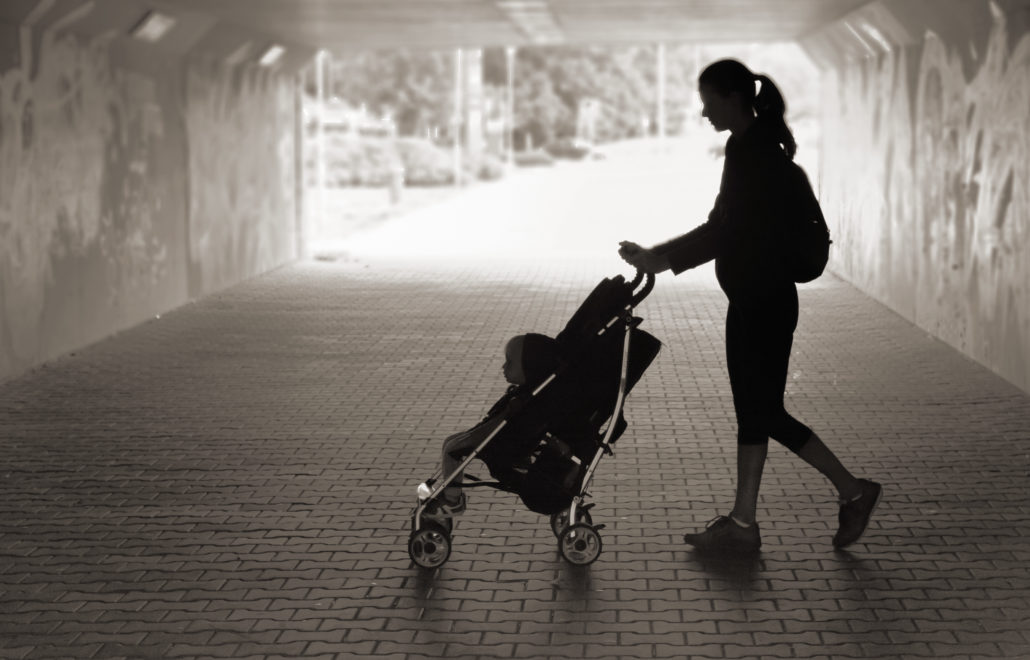
Suburban homelessness is often hidden from view—or ignored. But it’s a large and growing problem
For the last two months of her pregnancy, Kristen Johnston had a different kind of morning sickness. The year 2015 had started on a grim note and almost every day would begin the same way—she’d look at her surroundings, wondering what would become of her and her baby, and she’d cry. When Johnston was almost eight months pregnant, her boyfriend ended their relationship and kicked her out of his house, which they’d just finished renovating. She’d started crashing at her sister’s apartment in Hamilton, but then her sister wanted her out, too.
“Your whole life can change in a week—that’s literally what happened to me,” says Johnston. After leaving her childhood home in Burlington at 17, she’d run her own small business on the carnival circuit. “I always had money, I had my own business and I thought I had my mate for life—we’d been together for years,” she says. “It felt like I was hit by a train.” She had no savings, no options and nowhere to go.
Johnston had joined the ranks of the estimated 235,000 Canadians who experience homelessness in any given year. While she wasn’t living on the streets or in the shelter system, she had no place to call home. And, according to the most recent housing stats, this kind of hidden homelessness—where you sleep in your car, at a cheap motel or on someone’s couch—is the reality for some 50,000 Canadians every night. Hidden homelessness isn’t just an issue in big cities like Toronto; it’s also prevalent in the suburbs, right in some of the country’s most prosperous communities.
In these well-off towns and cities with their monster homes and upscale shops, precarious housing, poverty and homelessness are often hidden from view. Halton is the richest region in Ontario (as the number of luxury vehicles you see on the roads will attest). And yet, 80 percent of single-mother-led families residing there live in poverty, and are often what’s euphemistically called “underhoused.”

The surging real estate market has only intensified the problem. The average price of a home in the GTA is expected to hit $820,000 this year, which means that more than 75 percent of the housing falls above the affordability threshold—even wealthy families are paying more than is advised. Rents are high (it’s hard to find much under $1,800) and vacancy rates are so low (1.3 percent in Oakville, 1 percent in York Region and 0.8 percent in Mississauga) that landlords can be choosier about the applicants to whom they rent. “There are a lot of precariously housed people who are stringing together their Ontario Works cheques and maybe their tax credit and maybe a little child support, and then every cent they have goes to rent, so now they’re relying on food banks,” says Sara Cummings, executive director of Home Suite Hope, which provides social services to single-mother-led families in Halton region. “It just takes one instance to make them homeless.”
Many of the people who end up in social programs in the suburbs aren’t just struggling financially; they also lack a good support system, says Cummings. “Relational poverty is maybe the most isolating and horrific thing ever. And so they don’t have family, they don’t have friends, they don’t have money and they live in the most expensive region.”
That was definitely the case for Aisha (who asked that her name be changed for safety reasons). A new Canadian, she didn’t speak English, and when she left an abusive marriage, she had nowhere to turn. She moved from one family shelter to the next in the Golden Horseshoe area with her toddler and infant. “Life was very hard,” she says through the help of a translator. “When I left my husband, I didn’t have any money or anything, and with the language barrier I never knew who was going to take advantage of my situation.”

As for Johnston, with just weeks to go before her daughter was born, she was increasingly desperate to find somewhere to live. She applied for subsidized housing, but the wait lists were too long. She was, however, able to get on government assistance and moved into a bachelor apartment in Burlington on her due date—the labour pains started as soon as she finished setting up the crib. Life with a new baby was overwhelming and isolating. Adding to the stress was the fact that after her rent was paid, there was nothing left over. She relied on food banks for diapers and formula (and to get enough supplies, she used old identification at multiple food banks in Hamilton, Burlington and Oakville). “I got really, really depressed.” she says. “Never in a million years did I think I’d be a single mom on assistance. I wanted a better life for my daughter.”
The best approach to preventing homelessness, housing experts say, is to rapidly re-house people in transitional or affordable housing before they fall into chronic homelessness. “We know that building more shelters is really not going to be the way to end homelessness. It’s through a real variety—emergency housing, affordable housing and diverting them from ever entering into the system,” says Michael Braithwaite, CEO of United Way-funded Blue Door Shelters in York Region. “In fact, support of affordable housing is much cheaper than emergency housing.”
A housing-first approach is crucial, Braithwaite and housing experts say. After all, it’s difficult to address any of the other issues people are facing if they don’t have housing stability. Within months of being on the waiting list, Aisha and her two kids were accepted into the program at Angela’s Place, which provides a year of transitional housing support and coordinates access to counselling, daycare and language classes. They take a holistic and individualized approach, helping people set and achieve their goals. And with the support of a new-found community, Aisha improved her English, secured work and recently moved to an apartment of her own. “I was lost before coming here, and they helped me financially, emotionally,” she says. “They supported me like parents would a child.”

In Halton region, the Home Suite Hope program takes an even longer view, attempting to stop the generational cycle of poverty. The program supports women over a four-year period, by subsidizing their housing and offering scholarships at Sheridan College while also addressing any counselling needs. At the end, participants are self-sufficient, says Cummings. “They never go on social assistance again, nor do their children.” The track record speaks for itself: 100 percent of the graduates are employed and 60 percent of them are making more than $55,000 a year.
In 2016, Johnston was one of four women to get into the rigorous program. Within two years, she went from having no high school diploma, receiving social assistance and relying on food banks to graduating college and finding a good job. She now works as a business administrator and is living with her daughter in a well-appointed condo. “If you had told me what my life would be like back when I was on my sister’s couch, I wouldn’t have believed you,” she says. “But sometimes it just takes one person to go out of their way and to care. That makes all the difference.”